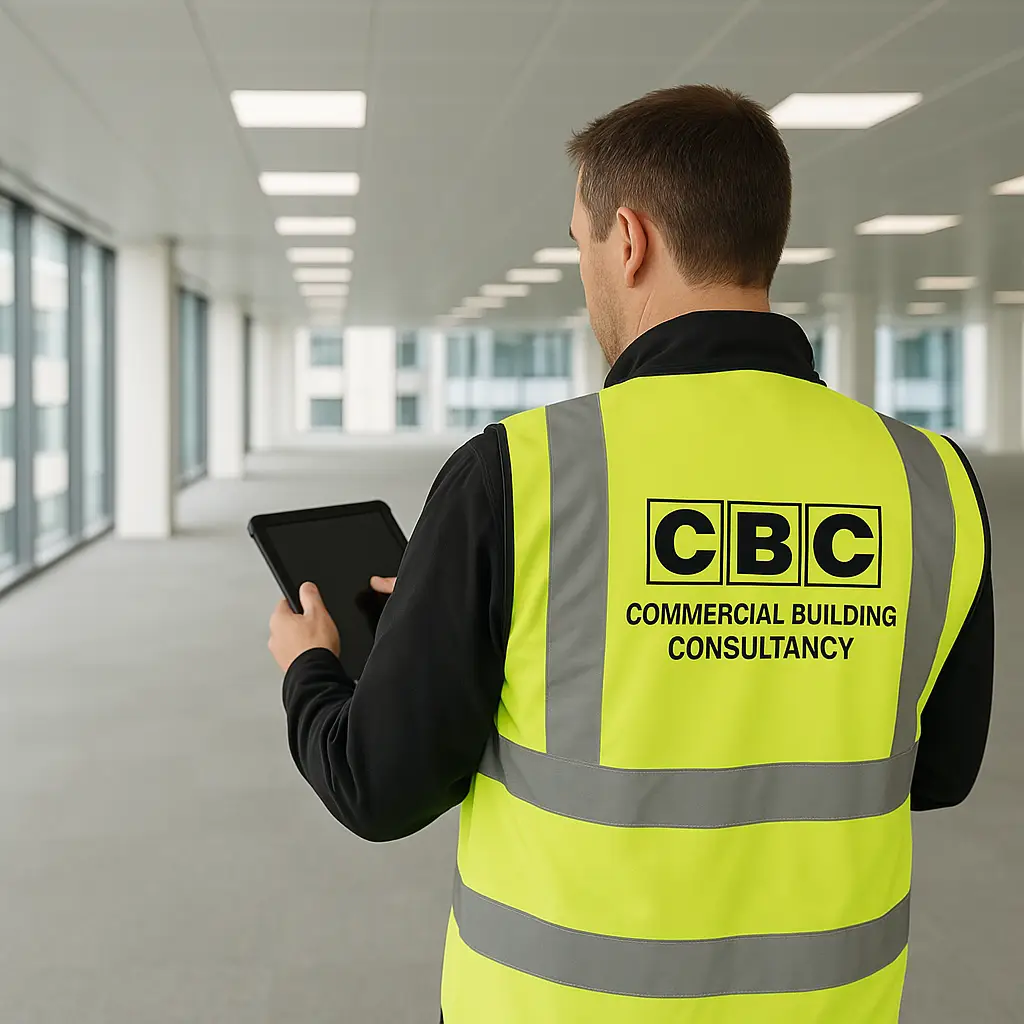If you’re about to take a commercial lease, the fastest way to sleep better at night is to make sure you’re not signing up to put the building into a better condition than it is today. That’s exactly what a Schedule of Condition (SoC) does. It records the property’s state at day one, so you don’t inherit historic defects or get stung at the end of the term. In this plain-English guide, we’ll show you how to use a Schedule of Condition to negotiate fair lease terms, shift risk fairly, secure cleaner clauses, and keep your deal moving.
What a Schedule of Condition actually is
A Schedule of Condition is an evidence pack, usually a mix of high-quality photographs and clear written notes that captures the property’s condition before you take occupation. It is appended to the lease and referred to by the repairing and yielding-up clauses. In practice, it sets the baseline: you agree to look after the premises, but you’re not responsible for putting it into a better state than the evidence shows at the start.
Why an SoC shifts risk for tenants
Without an SoC, “keep in repair” or “put and keep in repair” obligations can bite hard. You may be obliged to remedy defects you didn’t cause, simply because they’re discovered on your watch. A SoC changes the conversation. It reduces ambiguity, anchors discussions to facts, and helps both sides avoid costly disputes later. For you as a tenant, it’s a proportionate way to cap repairing liability and to align expectations with the landlord and managing agent from day one.
When to insist on an SoC (and how to include it in Heads of Terms)
The best time to secure an SoC is at Heads of Terms. Make the landlord’s agreement to append an SoC an explicit point in the deal, then commission the survey before the lease is drafted. If you’re late to the party, agree that an SoC will be prepared and appended as a condition precedent to completion. A simple line for Heads of Terms (to be reviewed by your solicitor) might read: “Repairing liability to be limited by a Schedule of Condition prepared by the Tenant’s surveyor and appended to the lease. The Tenant is not liable to put the Premises into any better condition than evidenced by the Schedule.” Keep it clear and neutral, this is a risk management tool for both sides.
What “good evidence” looks like
The quality of your SoC matters. We recommend high-resolution photos with time and date, exact locations, and unambiguous captions, cross-referenced to a concise written schedule. Expect hundreds, often 500 to 1,500+ of images on larger properties. Evidence should be logically indexed and easy for lawyers to reference. Don’t forget the easy-to-miss areas: roofs and rainwater goods, external yards and boundaries, roller shutters and loading doors, damp or movement cracks, and visible services where applicable. Our approach is evidence-led and thorough.
Linking the SoC to the repairing clause (and other clauses)
The SoC works only if your lease drafting points to it properly. That’s a job for your solicitor, but here’s what the legal team will typically align:
– Repairing and yielding up obligations should reference the SoC, e.g. “no obligation to put the Premises into any better state than as evidenced by the Schedule,” and “yield up in no worse condition than recorded, fair wear and tear excepted, by reference to the Schedule.”
– Decoration cycles should be clarified so you’re not forced to redecorate to a higher standard than the day-one evidence.
– Alterations and reinstatement should avoid inadvertently committing you to upgrade defective substrates that pre-dated occupation.
– Responsibility for service media (e.g., drains and roof plant) should reflect what the evidence shows.
Always have your solicitor review and tailor the wording to your specific deal.
Negotiation tactics that work
Lead with the mutual benefits. A robust SoC is not a tenant “get-out”; it is a dispute-reduction tool for both parties. Use photos to anchor the conversation: “Here is the existing corrosion to the roller shutter. Our obligation should not extend beyond what’s recorded.” Offer proportionate scope for small units (a fast-track SoC with focused coverage) if it keeps momentum. Be flexible on who pays the survey fee if needed; the bigger prize is the principle of limiting liability fairly.
Common pitfalls to avoid
– Vague captions and no location plan. If you can’t tell where a photo was taken, it won’t help in five years’ time.
– Forgetting key risk areas. Roofs, rainwater goods and service yards cause many end-of-term disagreements, capture them properly.
– Not appending the SoC. A standalone report that never makes it into the lease pack loses most of its value.
– Commissioning too late. If you do it post-completion, you’ll rely on goodwill and side letters. It’s doable, but harder.
What it can save you (a simple numbers view)
Every property is different, but here’s how figures often move when you’ve got an SoC. Without a baseline, you might see end-of-term items such as roof patching or yard repairs included in a claim, even if defects were pre-existing. With a good SoC, those items can be reduced or removed. For example, an illustrative roof overlay item at £28,000 might fall away entirely if defects are clearly evidenced at day one; external redecoration might reduce from roughly £12,000 to something closer to £4,000 where the starting condition is poor; a roller shutter overhaul might drop from around £6,500 to £1,500 focused on fair wear and tear. These are not promises, just a feel for the order of magnitude when the evidence is on your side.
Case study (anonymised): distribution unit, North West
A tenant negotiating a 35,000 sq ft warehouse asked us to produce a photographic and written SoC, with particular attention to the roof, service yard and roller shutters. We captured over a thousand images with precise locations and captions, issued a draft to the tenant’s solicitor, and the SoC was appended to the lease. At lease end, the initial landlord schedule included several items already recorded at day one. Because the SoC evidence was clear, the tenant’s liability was limited to deterioration during the term. The headline claim reduced materially by roughly sixty percent versus the initial draft schedule, keeping the exit cordial and quick.
How we handle this quickly for you
- Scope and brief. We confirm the property, access and timing, and align on what needs capturing.
- Site visit. We cover the UK and can usually attend within a few days.
- Evidence capture. High-resolution photographs and concise notes, systematically indexed.
- Draft and review. You and your solicitor review the draft and we make any clarifications.
- Final issue. We deliver a clean, court-ready pack to append to the lease.
If you need to move fast, tell us your target completion date. We’ll give you a realistic timeline and work to it.
FAQs
Does an SoC replace the repairing clause?
No. The SoC is the evidence; the clause is the promise. You need both. The clause should point to the SoC so your obligations are measured against the recorded condition.
Can we agree an SoC after signing Heads of Terms?
Yes. It’s cleaner to agree it in Heads of Terms, but you can still commission an SoC during drafting or as a condition of completion. The key is to append it and cross-reference it properly in the lease.
Who usually pays for the SoC?
It varies. Tenants often commission and pay because the protection benefits them most. On balanced deals, landlords sometimes contribute because it reduces dispute risk and speeds up completion.
How long does it take to produce?
For small units, often a few working days from inspection to draft. Larger or more complex sites take longer. If you have a completion date, tell us and we’ll work back from there.
Will it cover M&E services?
An SoC usually records visible condition only. Detailed testing or specialist reports are separate instructions. If services are critical to your use, ask us what’s proportionate for your deal.
What if the landlord refuses an SoC?
Explain that it’s a baseline to reduce disputes for both sides. Offer a proportionate scope or to pay the cost. If refusal persists, your solicitor may push for other protections in the drafting.
Is a photographic SoC enough on its own?
Photos are vital, but written notes and clear indexing make the evidence usable. The strongest SoCs combine both.
Next steps and how we can help
If you’re mid-negotiation and need a Schedule of Condition quickly, we can help. We’ll capture the right evidence, liaise with your solicitor, and get a clean, append-ready pack back to you without slowing the deal.
Book a Schedule of Condition survey: https://schedule-of-condition-surveyors.co.uk/
Need dilapidations input too? https://dilapidations-surveyors.co.uk/
Important note
This article is general guidance, not legal advice. Always ask your solicitor to review and adapt the lease drafting to your specific property and deal.


